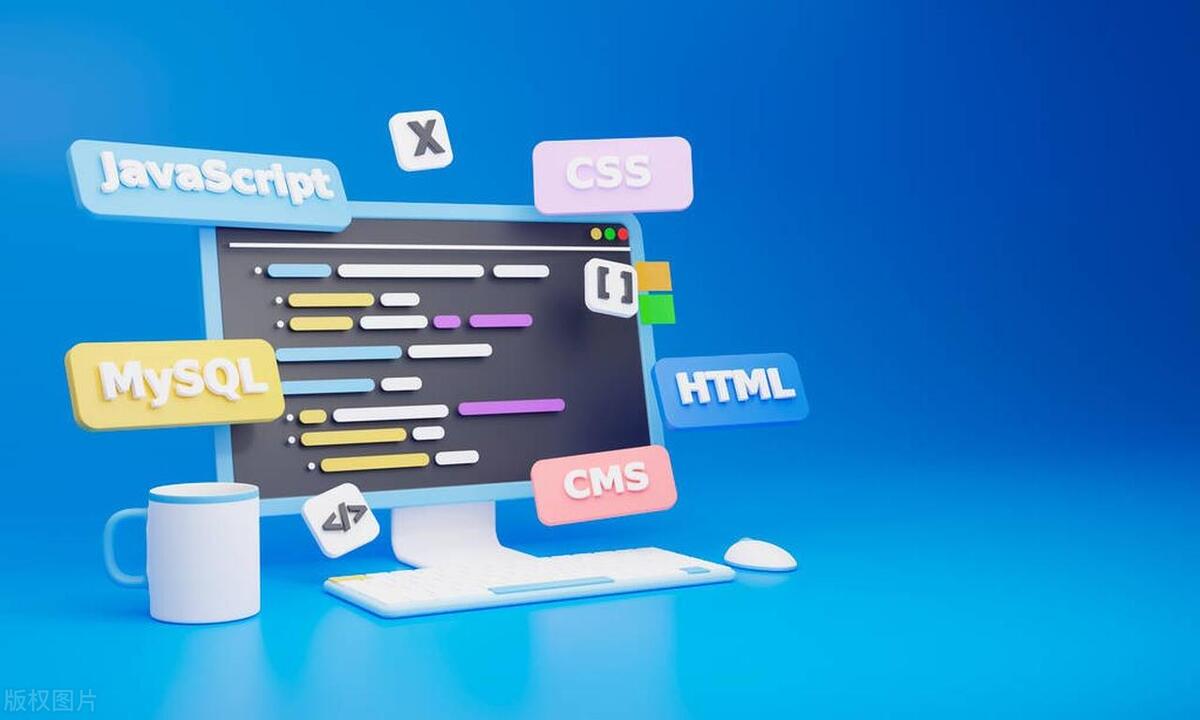Selecting Monorepo can improve multi-project collaboration efficiency and code sharing. Nx is more suitable for building medium and large systems from scratch, providing intelligent task scheduling, rich plug-in ecosystem and IDE integration; Lerna is good at NPM package management, suitable for existing build systems or open source projects. Both can also be used in combination. In practice, Nx can initialize and add plug-in to generate projects through create-nx-workspace; Lerna needs to set workspaces and use lerna create to create packages, and select the appropriate version strategy.

When you want to uniformly manage the code, dependencies and build processes of multiple front-end projects, Monorepo (single warehouse multiple projects) becomes a solution worth considering. Nx and Lerna are the two most mainstream tools at present. They all help you manage multiple projects in the same warehouse, but each has its own focus. If you are hesitant between the two, this article should help you clarify your thoughts.

Why choose Monorepo?
Monorepo's core advantages are more convenient code sharing, more unified version control, and higher collaboration efficiency . For example, if you are developing multiple React component libraries or micro front-end applications, there may be shared UI components, tool functions, or configuration files between these projects. Maintaining it in a traditional multi-warehouse way is cumbersome, and Monorepo allows you to do it all in one place.
In addition, for large teams, Monorepo also helps reduce the “version hell” problem. For example, project A uses v1 of a package, and project B uses v2, which can easily lead to problems during upgrades. In Monorepo, you can make sure that all projects are using the same version.

Nx: Modern front-end engineering integration solution
Nx is a complete monorepo toolchain launched by Nrwl. It not only supports mainstream frameworks such as Angular, React, Vue, etc., but also has built-in functions such as code generator, dependency analysis, cache construction, distributed task execution , etc.
Its core advantages are:

- Intelligent task scheduling : It can automatically identify which projects are affected and only the modified parts are built/tested.
- Rich plug-in ecosystem : The official provides support for Angular, React, Node.js, etc., and the community has also expanded a lot.
- Deep integration with IDE : With the VS Code plug-in, you can easily view dependency graphs, run tasks, etc.
If you want a tool out of the box and don't want to write too many scripts yourself, Nx will be a perfect choice.
Lerna: The old JS Monorepo management tool
Lerna is the first popular monorepo tool, mainly aimed at the JavaScript community. It is good at handling dependencies between version management and packages , and is suitable for project structures with NPM packages as the core.
Features of Lerna include:
- Version release automation : supports two modes: fixed version number (fixed) and independent version number (independent).
- * Simple workspace: Dependency mechanism**: Local packages can be directly referenced, and there is no need to publish first.
- Lightweight : Lerna focuses more on package management issues than Nx.
If you are mainly doing open source projects, NPM package management, or you already have your own build system and just need a tool to coordinate versions and dependencies, then Lerna will be more suitable for you.
How to choose a model? Depend on your actual needs
- If you are building a medium and large front-end system from scratch, such as including multiple micro front-ends, server modules, and shared libraries, it is recommended to directly access Nx. It provides a complete tool chain and is suitable for long-term maintenance.
- If you already have multiple NPM packages, or your team is more familiar with npm/yarn’s workflow, Lerna may be easier to get started.
- If you pursue extreme performance optimization, such as speeding up CI construction and incremental construction, Nx provides more ready-made solutions.
Of course, the two can also be used in combination. For example, use Lerna for version release, and use Nx for construction and dependency management. However, although this combination is flexible, it also increases learning and maintenance costs.
Practical operation tips
If you decide to try Nx, you can start with the following steps:
- Initialize a workspace using
npx create-nx-workspace - Add plugin, such as
@nx/reactor@nx/angular - Create a new project or library with
nx generate - Installing Nx plug-in in
.vscode/extensions.jsonimproves development experience
If it's Lerna:
- Remember to set
"workspaces": trueinpackage.json - Create a new package using
lerna create - Confirm the version strategy before release (fixed vs independent)
Basically that's it. Monorepo is not a silver bullet, but it can significantly improve development efficiency in the right scenario. Nx is more like an all-rounder, while Lerna is a veteran expert in package management. Just choose according to your project type and team habits.
The above is the detailed content of Frontend Monorepo Management with Nx or Lerna. For more information, please follow other related articles on the PHP Chinese website!

Hot AI Tools

Undress AI Tool
Undress images for free

Undresser.AI Undress
AI-powered app for creating realistic nude photos

AI Clothes Remover
Online AI tool for removing clothes from photos.

Clothoff.io
AI clothes remover

Video Face Swap
Swap faces in any video effortlessly with our completely free AI face swap tool!

Hot Article

Hot Tools

Notepad++7.3.1
Easy-to-use and free code editor

SublimeText3 Chinese version
Chinese version, very easy to use

Zend Studio 13.0.1
Powerful PHP integrated development environment

Dreamweaver CS6
Visual web development tools

SublimeText3 Mac version
God-level code editing software (SublimeText3)

Hot Topics
 How does React handle focus management and accessibility?
Jul 08, 2025 am 02:34 AM
How does React handle focus management and accessibility?
Jul 08, 2025 am 02:34 AM
React itself does not directly manage focus or accessibility, but provides tools to effectively deal with these issues. 1. Use Refs to programmatically manage focus, such as setting element focus through useRef; 2. Use ARIA attributes to improve accessibility, such as defining the structure and state of tab components; 3. Pay attention to keyboard navigation to ensure that the focus logic in components such as modal boxes is clear; 4. Try to use native HTML elements to reduce the workload and error risk of custom implementation; 5. React assists accessibility by controlling the DOM and adding ARIA attributes, but the correct use still depends on developers.
 Describe the difference between shallow and full rendering in React testing.
Jul 06, 2025 am 02:32 AM
Describe the difference between shallow and full rendering in React testing.
Jul 06, 2025 am 02:32 AM
Shallowrenderingtestsacomponentinisolation,withoutchildren,whilefullrenderingincludesallchildcomponents.Shallowrenderingisgoodfortestingacomponent’sownlogicandmarkup,offeringfasterexecutionandisolationfromchildbehavior,butlacksfulllifecycleandDOMinte
 What is the significance of the StrictMode component in React?
Jul 06, 2025 am 02:33 AM
What is the significance of the StrictMode component in React?
Jul 06, 2025 am 02:33 AM
StrictMode does not render any visual content in React, but it is very useful during development. Its main function is to help developers identify potential problems, especially those that may cause bugs or unexpected behavior in complex applications. Specifically, it flags unsafe lifecycle methods, recognizes side effects in render functions, and warns about the use of old string refAPI. In addition, it can expose these side effects by intentionally repeating calls to certain functions, thereby prompting developers to move related operations to appropriate locations, such as the useEffect hook. At the same time, it encourages the use of newer ref methods such as useRef or callback ref instead of string ref. To use Stri effectively
 Vue with TypeScript Integration Guide
Jul 05, 2025 am 02:29 AM
Vue with TypeScript Integration Guide
Jul 05, 2025 am 02:29 AM
Create TypeScript-enabled projects using VueCLI or Vite, which can be quickly initialized through interactive selection features or using templates. Use tags in components to implement type inference with defineComponent, and it is recommended to explicitly declare props and emits types, and use interface or type to define complex structures. It is recommended to explicitly label types when using ref and reactive in setup functions to improve code maintainability and collaboration efficiency.
 How to handle forms in Vue
Jul 04, 2025 am 03:10 AM
How to handle forms in Vue
Jul 04, 2025 am 03:10 AM
There are three key points to be mastered when processing Vue forms: 1. Use v-model to achieve two-way binding and synchronize form data; 2. Implement verification logic to ensure input compliance; 3. Control the submission behavior and process requests and status feedback. In Vue, form elements such as input boxes, check boxes, etc. can be bound to data attributes through v-model, such as automatically synchronizing user input; for multiple selection scenarios of check boxes, the binding field should be initialized into an array to correctly store multiple selected values. Form verification can be implemented through custom functions or third-party libraries. Common practices include checking whether the field is empty, using a regular verification format, and displaying prompt information when errors are wrong; for example, writing a validateForm method to return the error message object of each field. You should use it when submitting
 Server-Side Rendering with Next.js Explained
Jul 23, 2025 am 01:39 AM
Server-Side Rendering with Next.js Explained
Jul 23, 2025 am 01:39 AM
Server-siderendering(SSR)inNext.jsgeneratesHTMLontheserverforeachrequest,improvingperformanceandSEO.1.SSRisidealfordynamiccontentthatchangesfrequently,suchasuserdashboards.2.ItusesgetServerSidePropstofetchdataperrequestandpassittothecomponent.3.UseSS
 A Deep Dive into WebAssembly (WASM) for Front-End Developers
Jul 27, 2025 am 12:32 AM
A Deep Dive into WebAssembly (WASM) for Front-End Developers
Jul 27, 2025 am 12:32 AM
WebAssembly(WASM)isagame-changerforfront-enddevelopersseekinghigh-performancewebapplications.1.WASMisabinaryinstructionformatthatrunsatnear-nativespeed,enablinglanguageslikeRust,C ,andGotoexecuteinthebrowser.2.ItcomplementsJavaScriptratherthanreplac
 What is content security policy CSP
Jul 04, 2025 am 03:21 AM
What is content security policy CSP
Jul 04, 2025 am 03:21 AM
Content Security Policy (CSP) prevents attacks such as XSS by limiting the loading source of web page resources. Its core mechanism is to set a whitelist to prevent unauthorized scripts from being executed. The steps to enable include: 1. Define the policy and clarify the allowed resource sources; 2. Add Content-Security-PolicyHTTP header to the server; 3. Use Report-Only mode to test and debug in the initial stage; 4. Continuous monitoring and optimization strategies to ensure that they do not affect normal functions. Notes include handling inline scripts, careful use of third-party resources, compatibility support, and other irreplaceable security measures.






